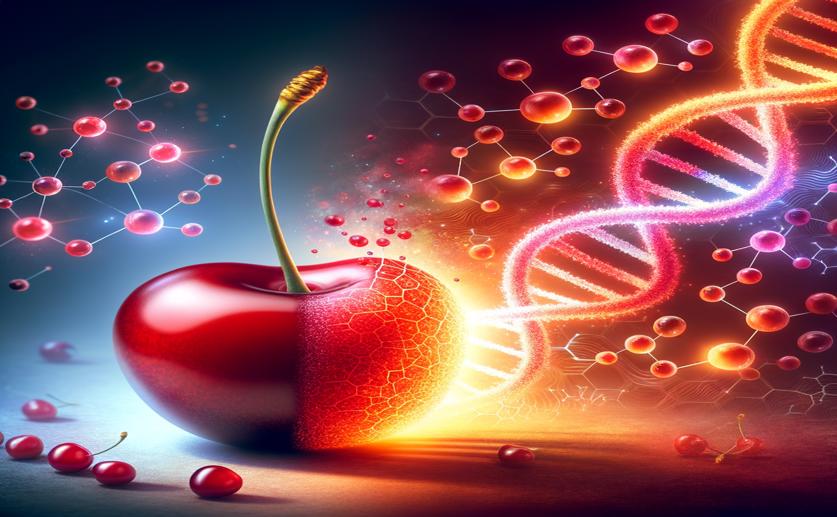
Finding Key Genes for Color in Cherries Using Genome Analysis
Jim Crocker
14th August, 2024

Image Source: Natural Science News, 2024
Key Findings
- Researchers at Sichuan Agricultural University studied the genetic basis of color variation in Chinese cherry fruits
- They identified 1490 R2R3-MYB genes, which are involved in anthocyanin biosynthesis, and classified them into 43 subfamilies
- Two specific genes, CpMYB10 and CpMYB4, were found to regulate anthocyanin levels, with CpMYB10 promoting and CpMYB4 repressing its accumulation
References
Main Study
1) Identifying potential anthocyanin biosynthesis regulator in Chinese cherry by comprehensive genome-wide characterization of the R2R3-MYB transcription factor gene family.
Published 13th August, 2024
https://doi.org/10.1186/s12864-024-10675-7
Related Studies
2) Evolution and functional diversification of R2R3-MYB transcription factors in plants.
3) Light-induced expression of a MYB gene regulates anthocyanin biosynthesis in red apples.
Journal: Plant physiology, Issue: Vol 142, Issue 3, Nov 2006
4) The R2R3 MYB transcription factor PavMYB10.1 involves in anthocyanin biosynthesis and determines fruit skin colour in sweet cherry (Prunus avium L.).
5) Apple skin patterning is associated with differential expression of MYB10.



 12th August, 2024 | Jim Crocker
12th August, 2024 | Jim Crocker